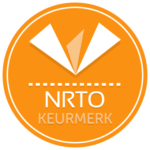Wij zijn dé IT-opleider van het noorden
- Train bij ons in Drachten of op jouw eigen locatie.
- Klanten geven ons een 9.2
- Erkende trainers.
- Ontvang een certificaat na deelname!
Kom je er niet uit?
Laat ons je helpen!
In de training: “Programming in C# (55339)” leer je de benodigde programmeervaardigheden om, met behulp van de C#-taal, applicaties voor Windows te ontwikkelen.
Vul hier al je gegevens in waarvoor je een offerte wilt ontvangen.
"*" geeft vereiste velden aan
Kom je er niet uit?
Laat ons je helpen!

Vul hier al je gegevens in waarvoor je een offerte wilt ontvangen.
"*" geeft vereiste velden aan
Kom je er niet uit?
Laat ons je helpen!

€2695,- Excl. BTW
Inschrijven voor een trainingThis training course teaches developers the programming skills that are required for developers to create Windows applications using the C# language. During their five days in the classroom students review the basics of C# program structure, language syntax, and implementation details, and then consolidate their knowledge throughout the week as they build an application that incorporates several features of the .NET 6.0.
The course aims to follow the spirit of the Microsoft Official Curriculum course 20483, while bringing it completely up-to-date with the latest features of Visual Studio 2022, and the cross-platform capabilities of .NET 6.0.
This course is intended for experienced developers who already have programming experience in C, C++, JavaScript, Objective-C, Microsoft Visual Basic, or Java and understand the concepts of object-oriented programming.
This course is not designed for students who are new to programming; it is targeted at professional developers with at least one month of experience programming in an object-oriented environment. Those new to programming should consider course 55337AC - Introduction to Programming.
The 55337AC course uses C# as the language to facilitate an introduction to programming generally, whereas this course focuses on the C# language itself, making it an excellent follow-on course. If you want to learn to take full advantage of the C# language, then this is the course for you.
Module 1: C# Syntax
Microsoft .NET 6 provides a comprehensive development platform that you can use to build, deploy, and manage applications and services. By using .NET, you can create visually compelling applications, enable seamless communication across technology boundaries, and provide support for a wide range of business processes.
In this module, you’ll learn about some of the core features provided by.NET and Microsoft Visual Studio. You’ll also learn about some of the core C# constructs that enable you to start developing .NET applications.
Lessons:
Lab 1: C# Syntax
After completing this module, students will be able to:
Module 2: C# Language Concepts
Applications often consist of logical units of functionality that perform specific functions, such as providing access to data or triggering some logical processing. C# is an object-orientated language and uses the concept of methods to encapsulate logical units of functionality. Although a good practice is to have methods that do just one thing, they can be as simple or as complex as you like. It is also important to consider what happens to the state of your application when an exception occurs in a method.
Lessons
Lab 1: C# Language Concepts
After completing this module, students will be able to:
Module 3: C# Structures, Collections and Events
To create effective applications you must first learn some fundamental C# constructs. You need to know how to create simple structures to represent the data items you are working with. You need to know how to organize these structures into collections, so that you can add items, retrieve items, and iterate over your items. Finally, you need to know how to subscribe to events so that you can respond to the actions of your users.
Lessons
Lab 1: C# Structures, Collections and Events
After completing this module, students will be able to:
Module 4: C# Classes
In this module, you’ll learn how to use interfaces and classes to define and create your own custom, reusable types. You’ll also learn how to create and use enumerable type-safe collections of any type.
Lessons
Lab 1: C# Classes
After completing this module, students will be able to:
Module 5: C# Inheritance
In this module, you’ll learn how to use inheritance to create class hierarchies and to extend .NET types.
Lessons
Lab 1: C# Inheritance
After completing this module, students will be able to:
Module 6: Input and Output
In this module, you’ll learn how to read and write data by using transactional filesystem I/O operations, how to serialize and deserialize data to the filesystem, and how to read and write data to the filesystem by using streams.
Lessons
Lab 1: Input and Output
After completing this module, students will be able to:
Module 7: Database Access
In this module, you’ll learn how to use Entity Framework and how to query many types of data by using Language-Integrated Query (LINQ).
Lessons
Lab 1: Database Access
After completing this module, students will be able to:
Module 8: Using the Network
In this module, you’ll learn how to use the request and response classes in the System.Net namespace to directly manipulate remote data sources. You’ll also learn about REST and OData and look briefly at ASP.NET Core MVC.
Lessons
Lab 1: Using the Network
After completing this module, students will be able to:
Module 9: Graphical User Interfaces
In this module, you’ll learn how to use Extensible Application Markup Language (XAML) and Windows Presentation Foundation (WPF) to create engaging UIs.
Lessons
Lab 1: Graphical User Interfaces
After completing this module, students will be able to:
Module 10: Application Performance
In this module, you’ll learn how to improve the performance of your applications by distributing your operations across multiple threads.
Lessons
Lab 1: Installing and Configuring Windows 7
After completing this module, students will be able to:
Module 11: C# Interop
In this module, you’ll learn how to interoperate with unmanaged code in your applications and how to ensure that your code releases any unmanaged resources.
Lessons
Lab 1: C# Interop
After completing this module, students will be able to:
Module 12: Designing for Reuse
In this module, you’ll learn how to consume existing assemblies by using reflection, and how to add additional metadata to types and type members by using attributes. You’ll also learn how to generate code at runtime by using the Code Document Object Model (CodeDOM) and how manage your .NET assemblies.
Lessons
Lab 1: Designing for Reuse
After completing this module, students will be able to:
Hieronder is een overzicht te vinden van trainingsmogelijkheden voor de Programming in C# (55339) training, met zowel klassikale als virtuele trainingen. Selecteer de best passende optie en start jouw reis naar succes.
